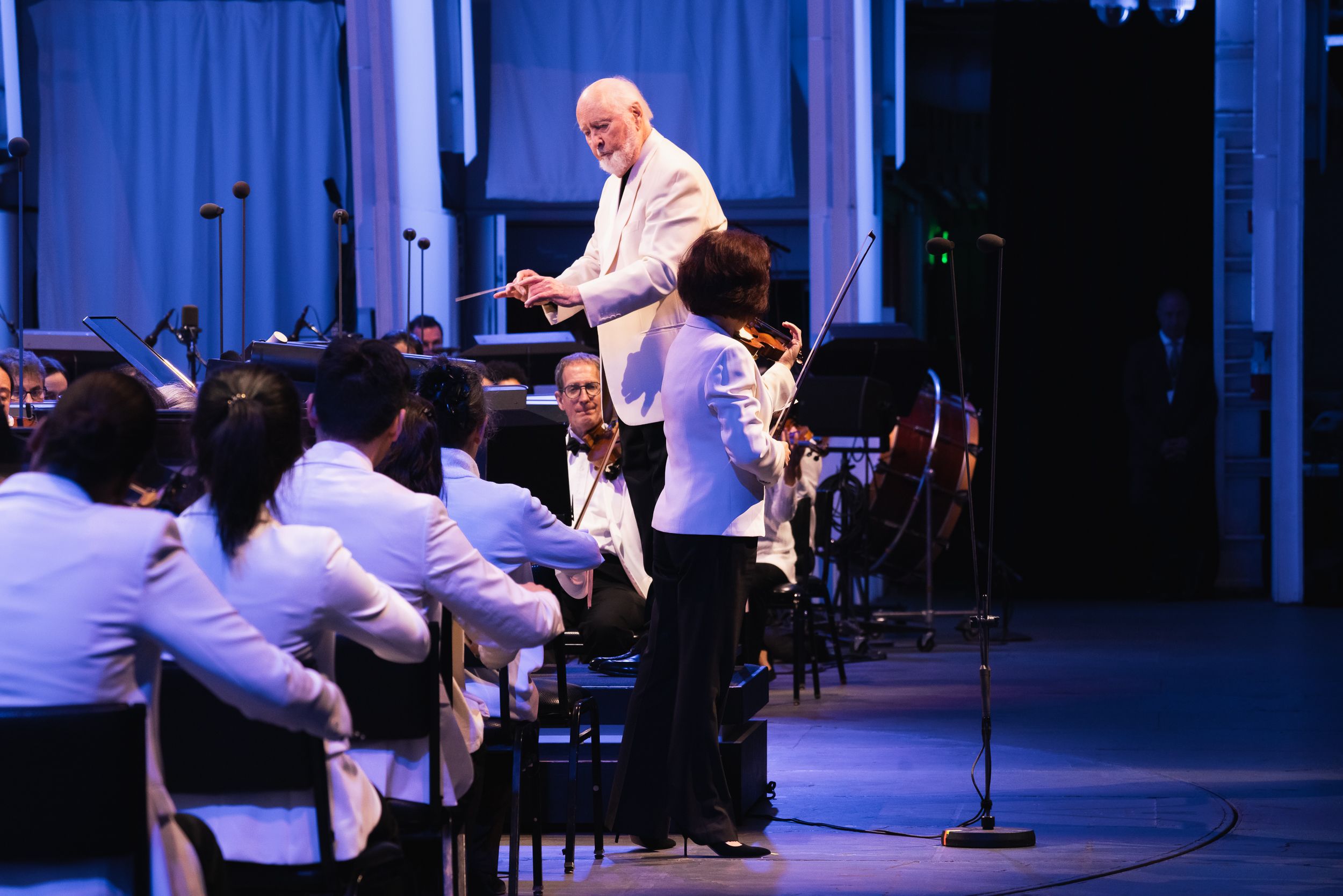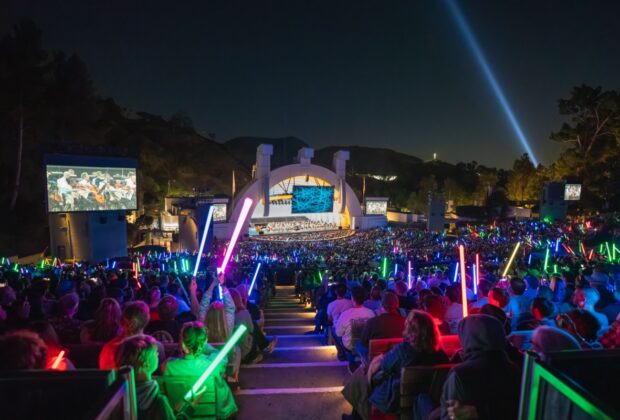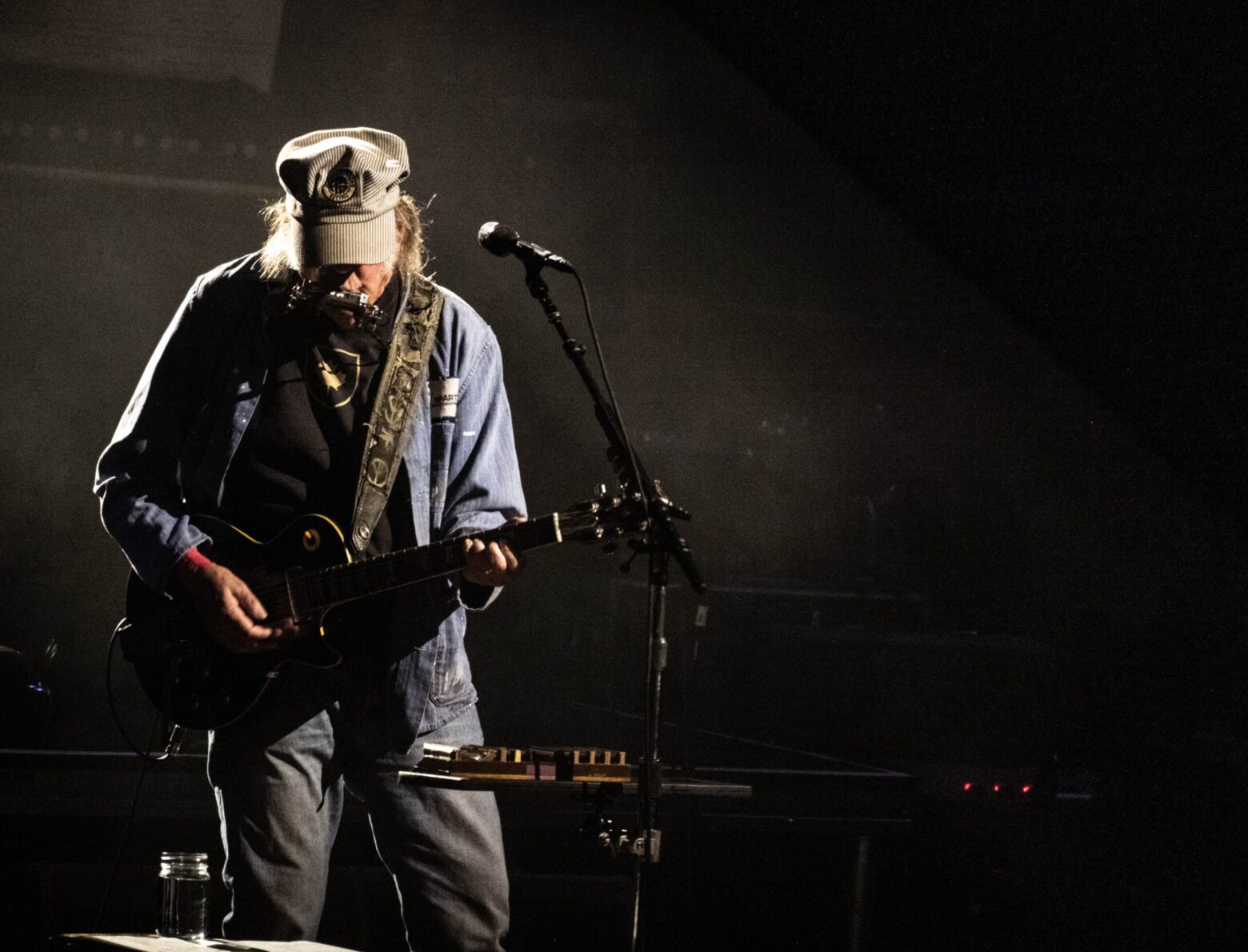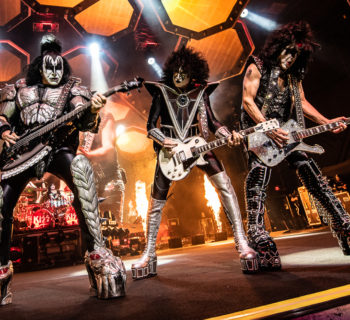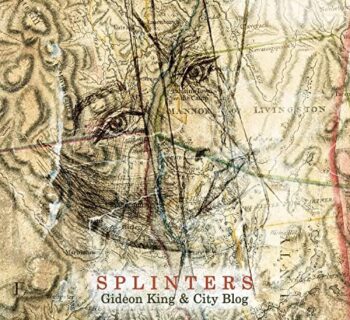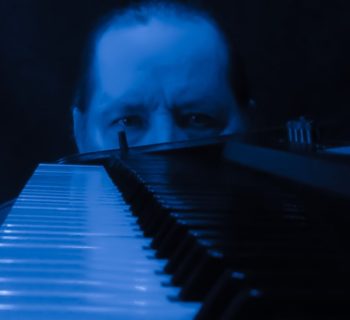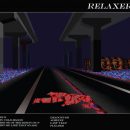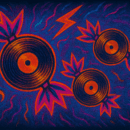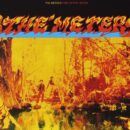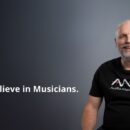Photo Credit: Farah Sosa for the LA Philharmonic
Every summer, it’s exclaimed and gushed about all over social media before and after it happens as if it’s the ultimate, highly anticipated moment of the most essential show at the Hollywood Bowl all season. It’s the entry stage left of legendary film composer and conductor John Williams, who after some customary bows picks up his baton and leads the LA Phil to an evening of image filled - both on the video screen and in our collective moviegoing imaginations) - orchestral adventures that take the rapturous audience through the past five decades of his blockbuster scoring career. Not just kids, but seemingly the thousands of adults who accompany them had their light sabers out, ready to make them glow and shake like an intergalactic rainbow from the first note the Phil played from any piece of the ever-growing Star Wars canon.
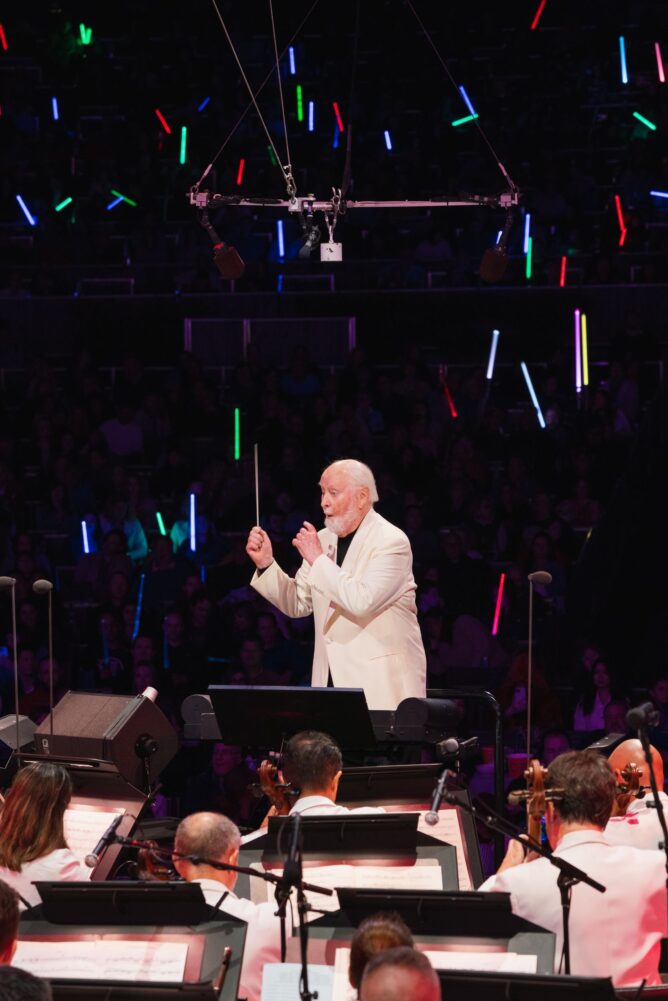
The Maestro of the Movies extravaganza graced Los Angeles earlier than usual this year, a few days after July 4, and was teased with an important question on the video screens as everyone waited for the sun to head over the hill and allow the gathering crowd to cool off. When did Williams make his Hollywood Bowl debut? The correct answer was 1978, making this night the 45th anniversary of his classic appearances. The idea to leave the maestro’s actual appearance onstage till after intermission and allow his friend and fellow legend, LA Phil Music Director Gustavo Dudamel to conduct the first half was a stroke of genius. Not only did it build rock star like anticipation, but it also showed just how daring, stunning and majestic Williams’ pieces can be in the loving capable hands of classical music’s younger generation.
Dudamel set the mood for the celebration of classic film scores with a rousing spin through “Hooray for Hollywood,” complete with a quick cut montage of classic film clips, most of which predate Williams’ entry into public consciousness in the 70s with disaster films (Earthquake, The Poseidon Adventure) and the iconic Jaws score some years after he started his career. After the galloping and swirling “The Cowboys Overture,” Dudamel harkened back to classic Tinseltown with the lyrical yet tension filled “Scene D’Amour” from Bernard Herrmann’s Vertigo before reminding us of Williams’ genius for sports themed epics, using inspiring clips from both Winter and Summer Olympics to accompany the whimsical, aspirational excitement of “Call of the Champions” - a fanfare for orchestra and choir composed for the 2002 Salt Lake City Winter Olympics.
This piece was the first of three consecutive rousing performances by two excellent local choirs, the Cal State University Fullerton University Fullerton Singers and the Los Angeles Children’s Chorus. The other two were the exotic, hopeful plea “Dry Your Tears, Afrika” (from Amistad) and the tense, then rousingly dramatic “Dual of the Fates” from Star Wars: The Phantom Menace, which prompted the audience to whip out their light sabers for the first time. It was trippy, truly a case of life imitating and paying homage to art, to see the audience all aglow even as Darth Maul was engaged in a light saber battle onscreen. The Dudamel-conducted portion of the show concluded with the ever-charming “Love Theme” and the dynamic, “March” taking flight from one of Williams’ most iconic works, the Superman score. In past years, the video screens would show a flying Christopher Reeve, but this time, in line with the whole Maestro celebration, the audience was treated to a historical sweep through Williams’ life and career, from studio conducting and Oscar winning nights to laughing with Steven Spielberg and resting between takes.
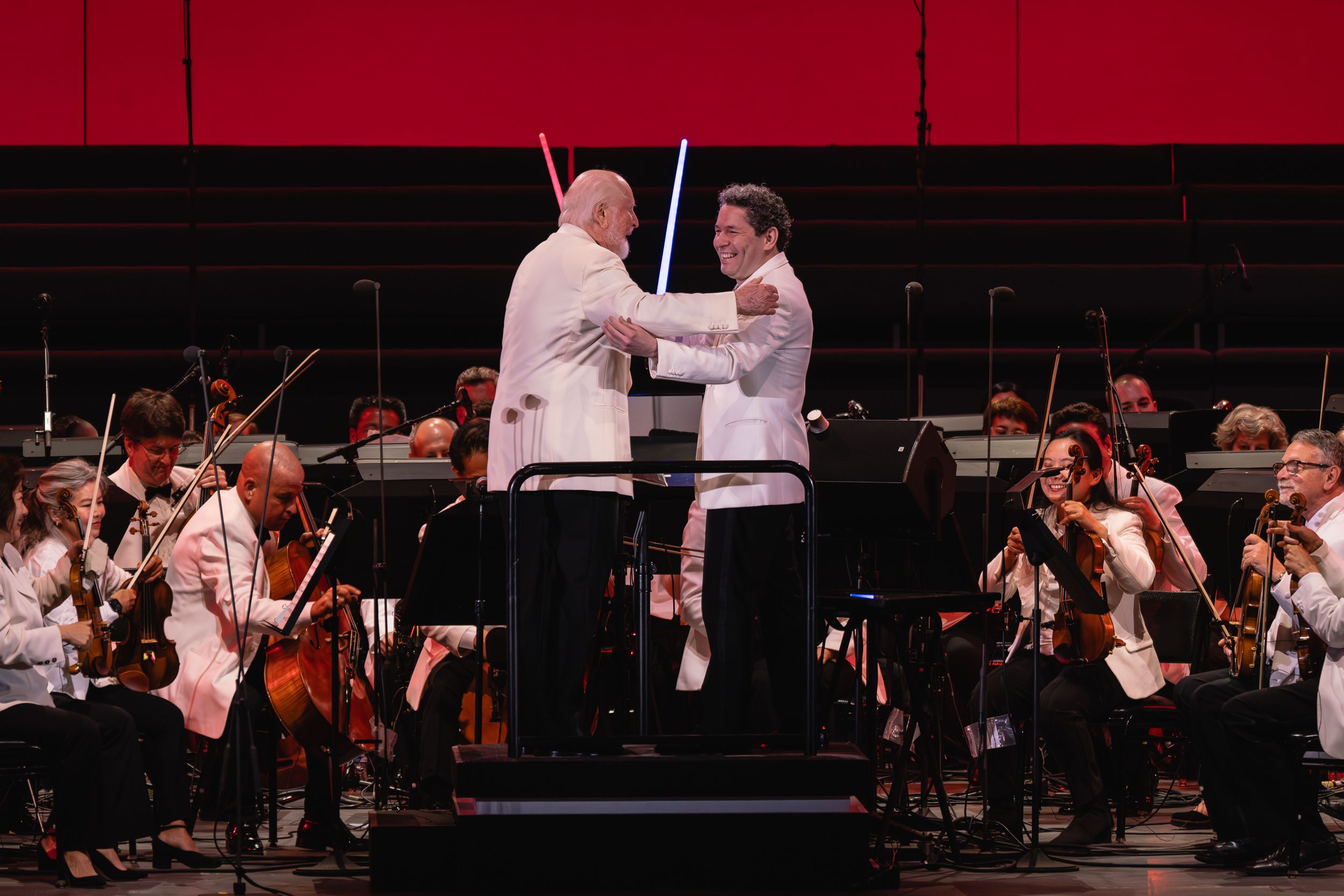
It was all Williams from there, as he entered stage left to fanfare, applause and a standing O before humbly taking the podium to lead the orchestra on a journey starting with selections from the Indiana Jones series, including the powerful and haunting themes from Jurassic Park and Schindler’s List and concluding with a unique and eclectic Star Wars suite (cue the light sabers). His Indy selections included slightly obscure but still engaging and lush pieces from Kingdom of the Crystal Skull (“The Adventures of Mutt”) and the new Dial of Destiny (“Helena’s Theme”) before ending with the always crowd-pleasing “Raider’s March.” Sandwiching these and the Star Wars selection with the soaring glory of Jurassic Park and the bittersweet, deeply emotional theme from Schindler’s List took the crowd back to one of Williams’ most prolific periods in the early and mid-90s. For all the frolic, pomp, circumstance and light saber hoopla attendant to the Star Wars medley (“The Asteroid Field,” “Princess Leia’s Theme,” “Throne Room and Finale” from a A New Hope), the heartfelt core and perhaps most memorable performance of the evening came from soloist Bing Wang using the highest notes of her violin to convey the solemn tears of Schindler’s List.
Williams obliged the sold-out crowds’ many demands for an encore with a total of three of his most hummable delights, “Yoda’s Theme,” the “Flying Theme” from E.T. and of course, The Empire Strikes Back’s booming, irrepressible “The Imperial March.” The fun didn’t stop with the music. During the march performance, the charismatic Dudamel returned for a bit of lighthearted mischief, whipping out his own light saber, climbing the podium and conducting the orchestral. The crowd ate up every second as Williams picked up a light saber of his own and began battling it out like playful kids who didn’t want the glorious, uplifting evening to end. Their audience seemed to feel quite the same.
